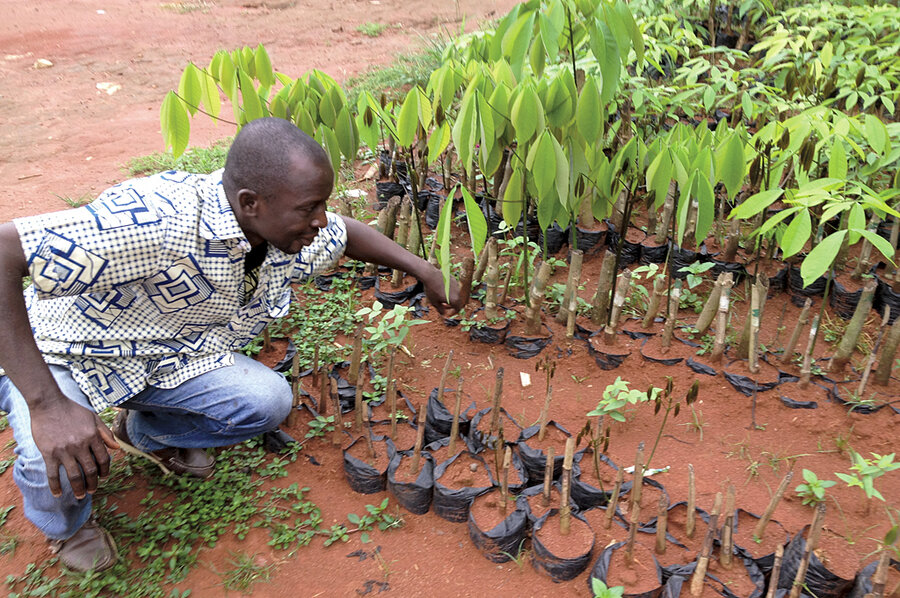Follow your labels: Feeding chocolate lovers at low, or no, wage
Loading...
| HautSassandra region, Ivory Coast
I freed a slave in Ivory Coast. Well, at least I thought he was a slave. The line between exploitation and opportunity blurs in extreme circumstances. He may have just been a guy who was having second thoughts about working for a year on a cocoa farm for $300.
Solo was alone. He had followed false promises from Ghana to work on a cocoa farm in Ivory Coast, the West African nation that, according to the US Department of Agriculture, supplies 52 percent of the cocoa in American chocolate products.
His bare, cinder-block room on the farm wasn't really his. He owned nothing himself. It was his "master's" room. He ate his "master's" food once a day. Each time Solo said "master," a shiver shot down my spine.
Solo was possessed by another human being. He was property, used to tend the cacao trees, harvest the pods, and split them open with a machete.
Solo, age 20, had worked on his master's small farm for four months when I met him, but he hadn't been paid. He had asked to leave and hadn't been allowed to. The dense forest that surrounds the remote village was a virtual prison from which he couldn't afford transport to leave. Even if he could have, he didn't have a passport. He had come here from another cocoa farm in Ivory Coast. He'd been lured to that first farm by a woman who arrived in his village in the neighboring nation of Ghana and promised him an opportunity to make $300 for a year's worth of work.
When he implied that his master sexually abused him, I knew I had to do something. I thought about buying Solo from his master, who – to make matters even more complex – happened to be my guide on my journey to explore the fields. Instead, I hired Solo as my interpreter (English is the official language of Ghana and he spoke it well), paid him $40 for a day's worth of work talking to cocoa farmers, and then asked him what he was going to do next.
"I'm going to Ghana," Solo said. He traveled to the nearest town with all of his possessions – a sheet of paper with the phone numbers of family and friends, and seven pictures of his parents and siblings – tucked into a plastic folder.
"I need a small drink," Solo said, after we checked the bus schedule. We walked into a tiny shack lit by a naked compact fluorescent bulb. He paid 60 cents for his drink and excused himself to use the toilet.
Solo didn't come back. I never saw him again. But before he'd left, he had approached the bar worker outside and asked him to look after me while he was gone. Days later I learned he was back on the cocoa farm.
After spending almost two weeks in Ivory Coast visiting with farmers – some of the poorest I've ever met in all of my travels – I couldn't imagine who could possibly consider it to be a land of opportunity. But since Ivory Coast's cocoa boom in the 1980s, driven by high cocoa prices and government support, that's exactly how many of those who live in the surrounding countries view it.
Solo left me with more questions than answers. He also left me with a note to deliver to his parents in Ghana:
"My Mother and Father, I am sorry for not tell[ing] you before leaving. I am not missing. I will be back again. You don't worry about me. This is Solomon. I am in Côte d'Ivoire."






